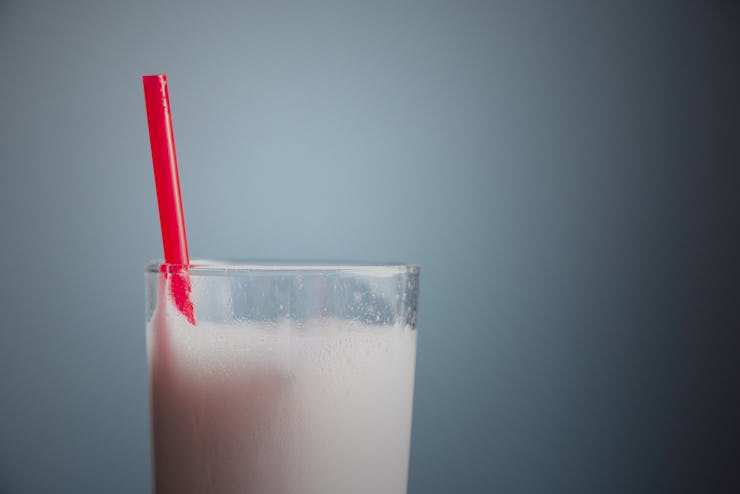The CDC Report on Teens Revealed Some Really Weird Statistics About Milk
Got milk? Teens say "nope."

The CDC’s recent National Youth Risk Behavior Survey is a statistical goldmine when it comes to figuring out what the teens do. Not only does it track well-known risk factors for adolescents, like smoking or drunk driving; it also tracks the comings and goings of other health-related trends. Some of them are rather odd: In its report published Thursday, the CDC showed that milk-drinking has been on the decline for the past 18 years and its rate of decline is only speeding up. Teens: They just don’t like milk!
Between 1999 and 2017, the CDC reported that teens who had drunk three or more glasses of milk per day had decreased by 10.1 percent. Admittedly, three or more glasses is a lot of milk to drink. So, they also reported on the amount of teens who had drunk one, two, or zero glasses of milk per day in the seven days preceding their survey. Again, between 1999 and 2017, the amount of teens who had drunk two glasses was down 16.1 percent as was amount who had drunk one glass per day.
The milk question used on the CDC's Youth Risk Behavior Survey for 2017
Given this, it follows that the amount of teens who did not drink any milk at should have increased — and the CDC reported that it had: roughly ten percent.
But an important thing to note about the Youth Risk Behavior Survey is that causality is not in their wheelhouse. It is 120 pages of pure descriptive statistics, nothing more. So, the report doesn’t go on to hypothesize as to why the teens have abandoned milk-drinking. It is also important to know that not every state includes every question. Some states for example, have decided not to include questions regarding sexual identity.
So for the milk question, which has been asked on every survey since 1999, we are missing results from 11 states: Alaska, Colorado, Connecticut, Delaware, Maryland, New Hampshire, North Carolina, Rhode Island, Vermont, Virginia, and Wisconsin.
An excerpt from the CDC report that breaks down the students who reported no milk-drinking by sex, sexual identity and sexual contact. Note the missing states.
But for the data that we do have, the CDC was able to break down the decline of milk drinking and determine the rate of change. They found that in the past four years (2013-2017), the rate of students who do not report any milk drinking had increased compared to earlier time periods:
“The prevalence of not having drunk milk increased during 1999–2013 (17.0%– 19.4%) and then increased more rapidly during 2013–2017 (19.4%–26.7%). The prevalence of not having drunk milk also increased from 2015 (21.5%) to 2017 (26.7%),” the report concludes.